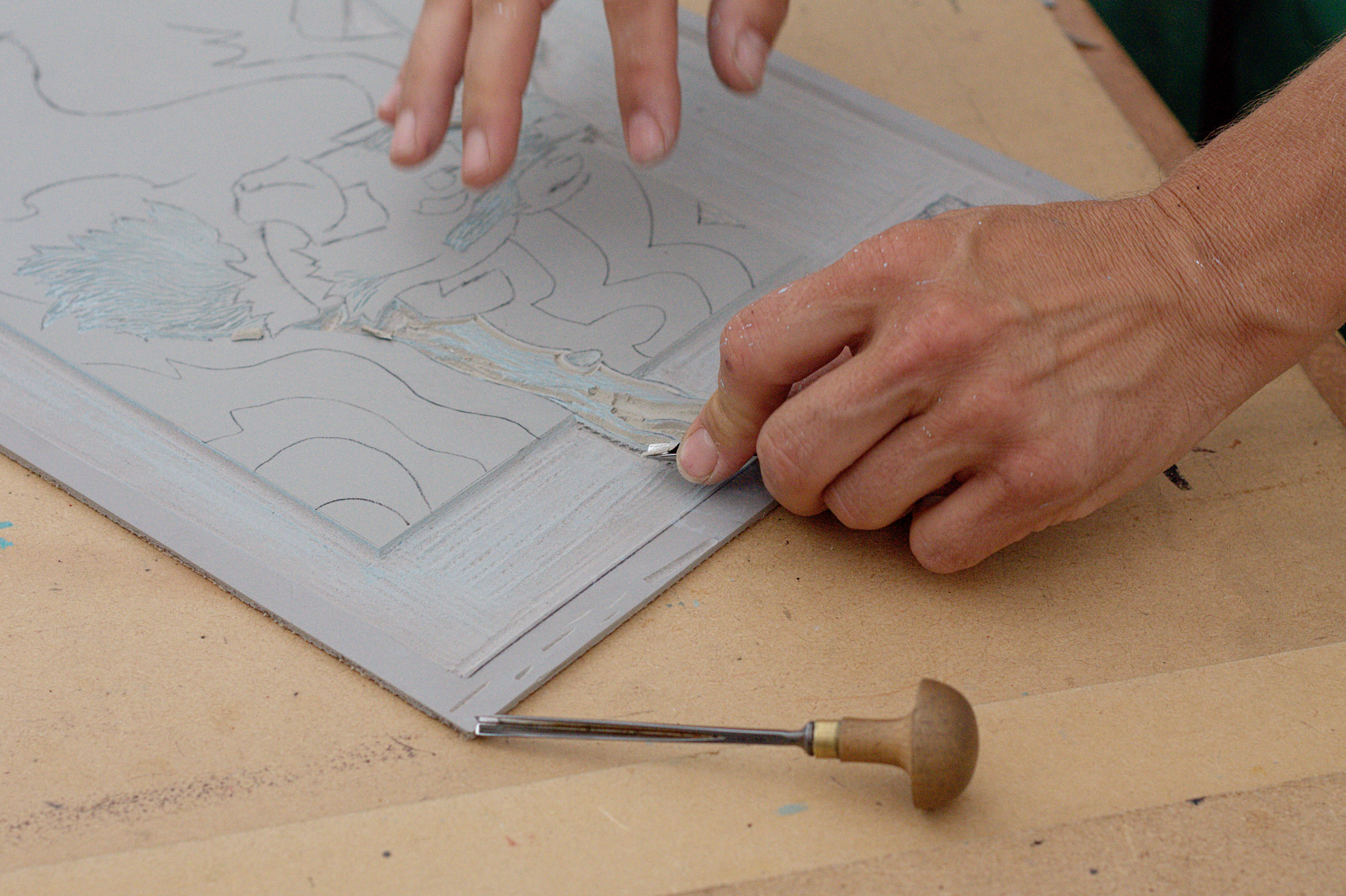
Linocut
Background:
When it comes to printing, there are several techniques available, which have evolved with time. One such technique is called relief printing. In this type of printing, a piece of paper is stamped with ink from the top surface. Within relief printing, there are various techniques available, but the most common technique is called Linocut.

Preparing a Linocut design on mat
What is Lincout?
Also called as Lino print, Lino Printing or Linoleum art, it is a technique of relief printing. It is a variant of woodcut printing. The difference being that in Linocut, in place of wooden plate, we use a sheet of linoleum as a relief surface. Linoleum isactually a variant of floor covering, which is made from renewable materials and sometimes pigments. This linoleum sheet is sometimes mounted on a wooden block.
History of Linocut:
Linocut, as a printing technique, was first used by The Bridge group of German Expressionist artists in early 20th century. Earlier this technique was mainly used by students to practice for woodcuts. But the credit for making this popular goes to the great painter of all times, Pablo Picasso.
A linocut print
How is Linocut printing done?
In this technique, an image is drawn on the linoleum surface, using a sharp knife or a V shaped chisel. This cut is made in such a way that the raised (uncarved areas) represent the reversal or the mirror image of the desired painting.
The ink is applied on the linoleum sheet through a brayer or a roller and then a print is taken on to a printing material like paper or fabric. The pressure is applied manually or through printing press. For best results, one should use a good quality smooth absorbent paper. Japanese rice papers tend to score very high on this parameter and that is why, these papers are used in Japanese woodblock prints traditionally. The Linocuts can be created black and white as well as coloured.
Creating colour linocuts
Coloured linocut can be created by any one of the following ways:
- Hand colouring – In this method, first a black and white print and then we fill colours through coloured ink or watercolour.
- Colour reduction – In this method, one block may be used to print multiple colours. First, the lightest colour is applied onto the lino block. The block may be either uncut or with a few cut lines only. This block is used to print on the paper.The block is then cut into again, and a second colour is used. Due to this, in some areas, the previously printed colour still shows up on the paper. This process is repeated for each colour. This is how multiple colours are oriented using the same block.
- Multi-block printing – This method is opposite of the previous technique. In this method, separate blocks are used for different colours. These multiple blocks are then printed on the same image, allowing for drying time in between.
- Chin-colle’ – In this method, a colored tissue paper is placed on the print before it is printed through the press. This leaves the colour of that paper where there originally would have been white areas.
Conclusion:
Linocut is now a very popular method of printing. The biggest benefit of Linocut printing is that, since, the linoleum sheet is soft as compared to wood. So, it is easier to do the carving on it. Also, a heated-up sheet is again much easier to carve. However, one big disadvantage of Linocut is that the linoleum sheet is very fragile. Hence, it tends to disintegrate fast as compared to wood. Due to this, it is not possible to take large numbers of prints from a single sheet.
